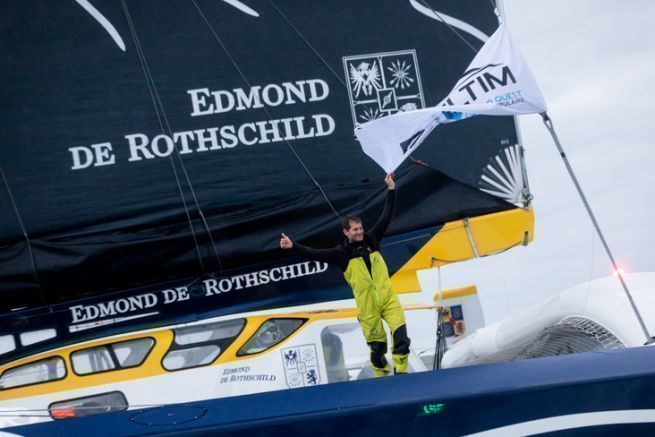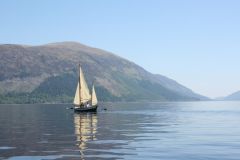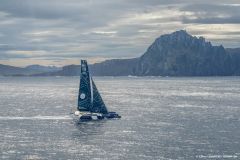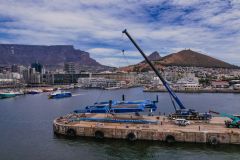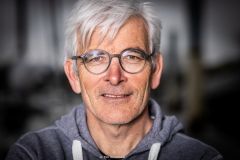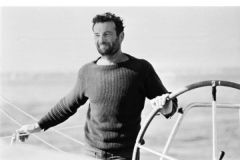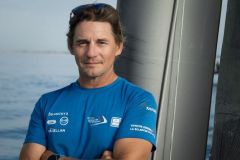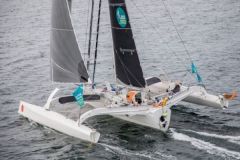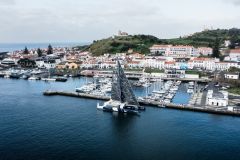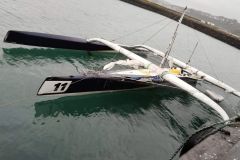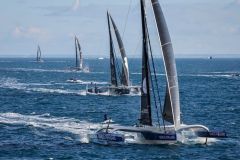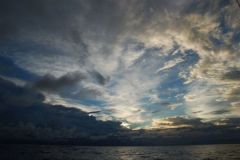Fifteen years since you last sailed solo and despite all your experience, this is your first Route du Rhum. How do you feel about it and what motivates you to return to your roots, especially in an Ultim?
When you're a basic Figaro racer, you stay that way all your life. Single-handed racing has always attracted me, but life made me do three Volvo Ocean Races. The plan was to win the Solitaire du Figaro and then go on to single-handed multihull racing. I was patient, but that's the way sport is. I was lucky to have my chance.
Three years ago, when we started with Gitana, we planned a solo and crewed program. I positioned myself for the Route du Rhum and Franck said to me " go to ". We started with the crew and I took over single-handed. The Figaro circuit is the best school for solo sailing.
On this Route du Rhum, I am a rookie in the sense that I have never sailed large boats single-handed. I compensate by being the one who has sailed the most on a flying Ultim. I have the most miles, I've done a lot of double-handed sailing, and it's part-time solo sailing. I know my boat well.
I am a rookie with a lot of desire and excitement. It's almost like a new beginning. Everything was new in the Figaro, it is also new in the Ultim flying boat.
The Route du Rhum was the first race that made me want to do ocean racing. Everyone dreamed of the Vendée Globe, I dreamed of the Route du Rhum in a multihull. I have very clear childhood memories of the Route du Rhum in 1990 and 1994 with Laurent Bourgnon. He inspired me, I remember even the color of his jacket at the start!
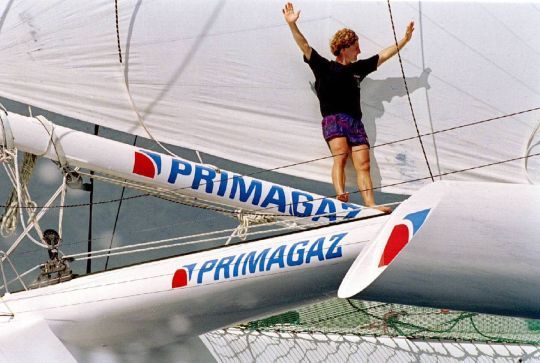
It is in a way a new big leap for Gitana, which had to abandon following its float damage in 2018.
It's the race that's been missing from his record of achievements, after winning everything for the past three years. The Maxi Edmond de Rothschild is a legendary boat. She marked a turning point by being the first flying boat. When it came out, not many people believed in this daring concept. Today, it is the reference.
Those who had built boats that were rather archimedean, but capable of flying have changed their tune... The new Banque Populaire has nothing to do with the old one. Everything is designed to fly.
If this boat hadn't existed, there wouldn't be foils this big, appendages this big, stingray wings to pull the boat along and add righting torque. It's almost the oldest flying boat, and it's still on the cutting edge. It has evolved a lot, even though the platform remains the same.
Winning the Route de Rhum would be a great victory, with meaning.
Is your experience in the Solitaire du Figaro a strength for the Route du Rhum?
The Solitaire du Figaro is the hardest race in terms of sleep management and performance. It is a small boat on which you are always soaked, but there is no better school. The proof, Armel le Cléac'h, Michel Desjoyeaux came back to itâeuros¦ Everybody likes this race, but it is especially the hardest single-handed race to win. There is no race in the world, in one-design, offshore, with so many people on the starting line. It is the school of rigor!
Sleep management is crucial when you are alone. On paper, this is my weak point. It's complicated to sleep on a boat that can capsize. So anticipating maneuvers is crucial. I'm doing very well. I have this culture of maneuvering, but the race is also about speed and sleep management.
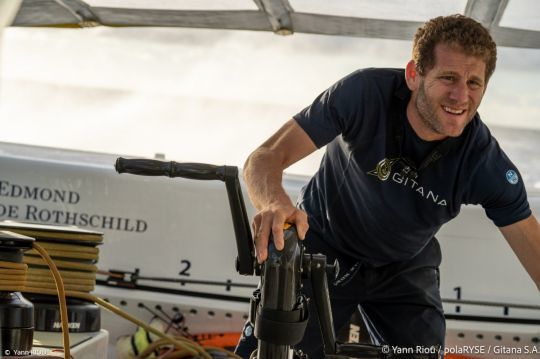
How did you make the transition to solitaire?
We make a lot of false solos because we always sail close to the coast. There is always a risk of collision. In training, we never manage to sleep as little as in racing. We do less watch, and so we don't want to take any risk.
I brought the boat back from Martinique on a false solo. This is the longest single-handed sailing I have done. It was a good experience to identify my strengths and areas for improvement, such as maneuver management, timing and sleeping on this boat. It gave me a clear idea and allowed me to see that I am capable of doing it.
For the last 4 years, I've been thinking only about this: how to sail single-handed.
I also did some real solo sailing for my qualification, which you could do alone or with a mediaman. I am the only one to have done my 2,000 miles in real solo.
Have you adapted your boat to solo sailing?
The change of foils is linked to the evolution of the boat. For the single-handed boat, we only worked on the ergonomics, especially on the watch seat which replaces one of the columns. We added a mattress to optimize my rest time in maximum comfort. We also installed some automatic release systems for safety.
What scares me is not the collision with an ofni, it is the collision with another boat, the damage I can cause to others.
I could have left with the boat I had before, it was designed with the round-the-world race in mind rather than the Route du Rhum. It is a boat designed for a solo sailor, with a very narrow cockpit for a single man. It has to be adapted more for the crew than for a single man. We adapted it for the crew for the Jules Verne Trophy. Here, we are closer to the double configuration.
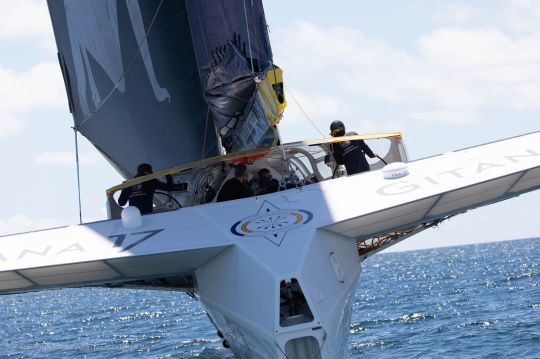
During the Jacques Vabre, the appendages were changed to take off even faster? Is it still the same line of conduct?
Yes, on the whole we want to go faster at high speeds. Single-handed, we are even lighter, so we take off sooner. The contract has been well fulfilled, especially with the new foils installed at the end of July.
We realized in the Finistère Atlantique that there was a battle with Banque Populaire, which has made a lot of progress with its appendages.
Gitana is winning every race format, is this an extra pressure for the Route du Rhum ?
The Route du Rhum is my big goal. Winning everything gives me confidence. I'm clear on the fact that the three-year lead we had three or four years ago, we no longer have today. When we got the boat, it was quite revolutionary, with big advantages over the others.
Today, everyone has the recipe for a good boat: big foils, big ray wings and hydrodynamicsâeuros¦
The margins between the boats are small. It promises to be a great fight. We're very close in performance, even if you can't always see it. We're close in pure speed. Single-handed, it's possible to make a difference.
You can be very fast with a crew, but hard to sail single-handedâeuros¦ For example, Groupama was great with a crew, but complicated single-handed, unlike the Gitana at the time, which was slower but easy to sail single-handed.
In the Ultim, we won't be at 100% of our boat's potential. Depending on that, we will see if we can push her to 90 or 95%. Everyone is attacking a lot, Armel, Thomas, François, Francisâeuros¦ They are all pushing their boat and will surely be very fast.
The boats go very fast. We are all going to be at the top of our game. We all have a strong history with the Route du Rhum. There is only Francis who won it. We're not going to do six Route du Rhumâeuros¦ This is our Olympics!
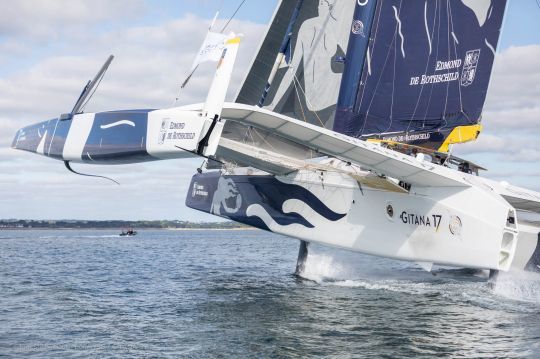
What is your vision of the competition after the 24h Ultim?
The level is very close. Although I made a small mistake in navigation by going a little too far, I did a good job without making any maneuvering errors. At the finish, the difference is very small. I was only 15 to 20 miles ahead of Armel.
Francis Le Goff announced at the Route du Rhum conference that the finish is possible on D+6, with ever faster boats. What is your opinion?
That's the least of my worries. I just want to be ahead of the others. It's certain that if the weather is good, the 7-day mark can be broken very easily. When I came back from Martinique, with a very slow start, I took 5 ½ days, but on a direct trajectory. It's faster in that sense. This record will fall.
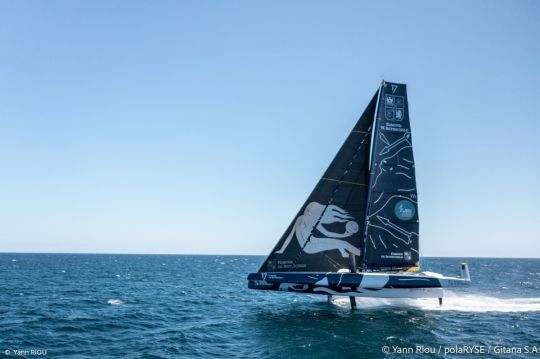
How to assess the risk not to end up on a breakage ? Do you work on navigation modes in degraded mode before the race?
These boats are made for the round-the-world race, not like the ORMAs. If you can't go full speed, you're not ready to sail around the world. In multihulls, you also have to know how to slow down. It is the sea that can bother us, not so much the wind or the speed. We encounter it especially in the first 24 hours. After that, we're at full speed.
We've been working hard to make the boat more reliable, and we're no longer in the discovery business as we were in the past. We have high safety coefficients. We broke a float in 2018 in that sense, and that's what made us so strong.
The latest boats are probably lighter than our boat. This shows that weight is not necessarily a problem anymore. You have to find a compromise between stiffness, which is important, and lightness. Losing control at 40 knots can have consequences! Even if the boats are strong, they have made a lot of progress in weight and other things.
Even if numerically it has progressed, we can't reproduce the fatigue and the repetition of shocks. We know how it can break, but not yet how it ages. For the moment, we have safety coefficients of 2 or even 3, so we could make it more fragile.
Is it possible to optimize Gitana or is the next step the construction of a new boat?
It's still possible and we have some ideas in mind. We have to because the other boats are also making progress, especially on the foils, which will be the same as ours. There are things that we can't change, that's for sure. The platform remains the same. With SVR Lazartigue, we have the same philosophy, but their floats are thinner. We are higher up on the water. There is still progress to be made in hydrodynamics, in aerodynamics.
We changed foils, and it's clearly not the same boat. We have made a lot of progress. But we're still not satisfied with our foils, we already know how to correct them. The others will also find great tricks that we will copy. We take the recipes of the one that works, but we will be blocked for a while by a platform. Today we could make a better platform, but we still have things to improve. It is possible to do it. As long as it works well, we'll continue like this, but we'll have to think about it.
